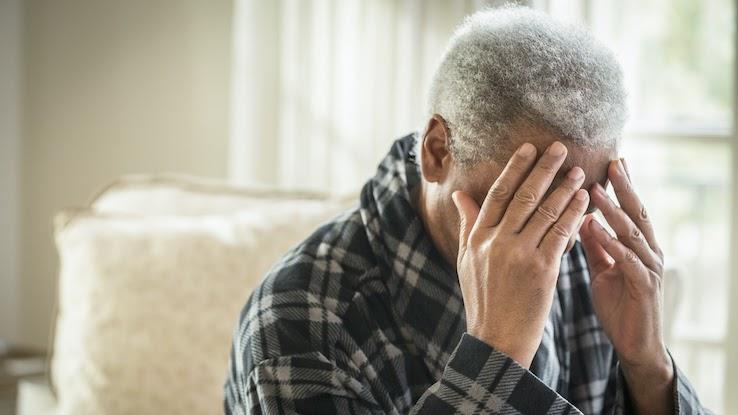How To Install Virus Protection

Shingles is an extremely painful, localized skin rash caused by the varicella zoster virus — the same virus that causes chickenpox. The defining characteristic of shingles is that it arises years, sometimes decades, after an initial chickenpox infection. Anyone who has had chickenpox or the immunization for chickenpox is at risk of developing shingles, as the virus lays dormant in the nervous system and can reactivate years later.

Shingles is caused by the varicella zoster virus, which also causes the common childhood chickenpox rash. After a person has experienced either a natural chickenpox infection or has been immunized against the virus, they're susceptible to developing shingles. Shingles, like chickenpox, arises in a similar manner years or decades later. It has a distinct rash pattern.
If you never had chickenpox as a child or have not been immunized against it, someone with a shingles rash can transmit the virus to you. However, your initial condition would be categorized as chickenpox, not shingles. One in every three people in the United States who has had chickenpox will develop shingles at some point in their life.
Shingles typically presents as a painful, red rash on the back or chest. Often, the shingles rash occurs in a stripe-like pattern known as a dermatomal distribution. This happens because the virus lies dormant in nerve tissue near the spinal cord.
It's very uncommon for the shingles rash to affect the entirety of the backside or chest — typically the rash affects only the left or right side of a person's body.
If the varicella zoster virus reactivates and results in shingles, signs and symptoms can include:
- Painful skin, including sensations of burning or tingling
- A red rash, often occurring several days after the initial pain sensations begin
- Blistering of the rashes
- Fever
- Headache
- Light sensitivity
How Is Shingles Transmitted?

Shingles cannot be passed from one person to another, but the varicella zoster (chickenpox) virus can, especially if you aren't immune to it. The varicella zoster virus is generally transmitted during childhood through the respiratory system or by skin-to-skin contact.
Shingles can erupt years later, possibly due to your aging immune system and to environmental factors. The open blisters that accompany shingles are highly contagious, and shingles can also be spread by either respiratory droplets or skin-to-skin contact. The shingles rash can create fluid-filled blisters. Touching the fluid from these blisters and then touching your nose, eyes or mouth is one common way the virus is transmitted.
Treating and Preventing Shingles

Getting inoculated with the chickenpox vaccine as part of a child's normal early vaccinations is vital for future health. Research supports vaccinating against varicella zoster, as avoiding the virus can decrease your risk of life-threatening complications such as widespread infection or encephalitis.
Research from the Children's Hospital of Philadelphia Vaccine Education Center also notes that the chickenpox vaccine weakens the zoster virus and may help reduce outbreaks of shingles in the future. The Centers for Disease Control and Prevention (CDC) recommends all adults 50 and older get the shingles vaccine.
Because shingles lesions do become inflamed and airborne, some experts recommend covering the rash and avoiding tight clothes or irritating adhesives. Avoid topical antibiotics unless your doctor recommends them. Most practitioners recommend simply keeping the affected area clean and dry.
Ask your doctor about antivirals, which are medications that can accelerate healing if you do contract shingles. You can also ask about Zostavax, the shingles vaccine that's approved for people over the age of 50.
If you're looking after a loved one who is experiencing shingles, keep your distance from anyone who has not had chickenpox or been immunized against it. The CDC states that most adults are not at risk of contracting chickenpox from a person with shingles, as more than 95% of adults have been exposed to varicella zoster. However, it's important that children be vaccinated and infants be protected from exposure to the virus.
Resource Links:
https://www.cdc.gov/shingles/about/index.html
https://www.nia.nih.gov/health/shingles
https://medlineplus.gov/shingles.html
https://www.aad.org/public/diseases/a-z/shingles-treatment
https://www.mayoclinic.org/diseases-conditions/shingles/symptoms-causes/syc-20353054
https://www.chop.edu/centers-programs/vaccine-education-center/vaccine-details/shingles-vaccine
MORE FROM SYMPTOMFIND.COM
How To Install Virus Protection
Source: https://www.symptomfind.com/health/how-shingles-virus-transmitted?utm_content=params%3Ao%3D740013%26ad%3DdirN%26qo%3DserpIndex
Posted by: youngweneary.blogspot.com

0 Response to "How To Install Virus Protection"
Post a Comment